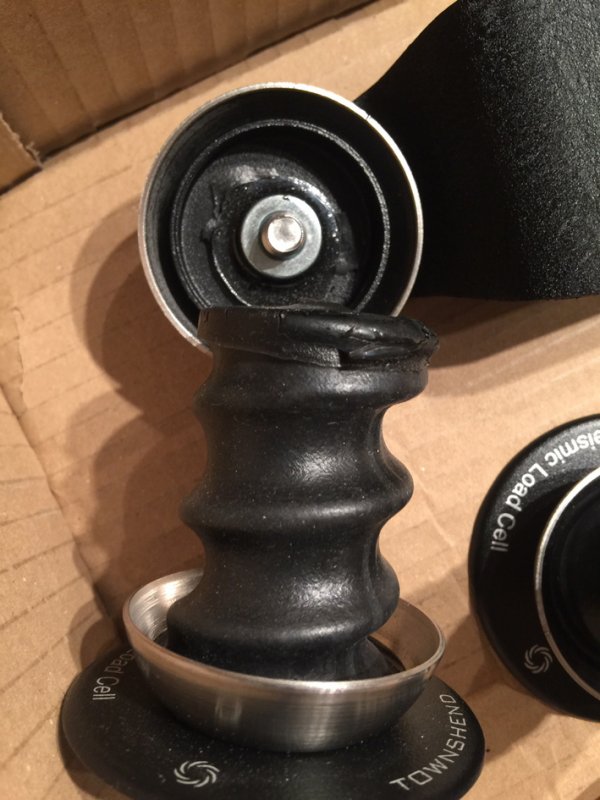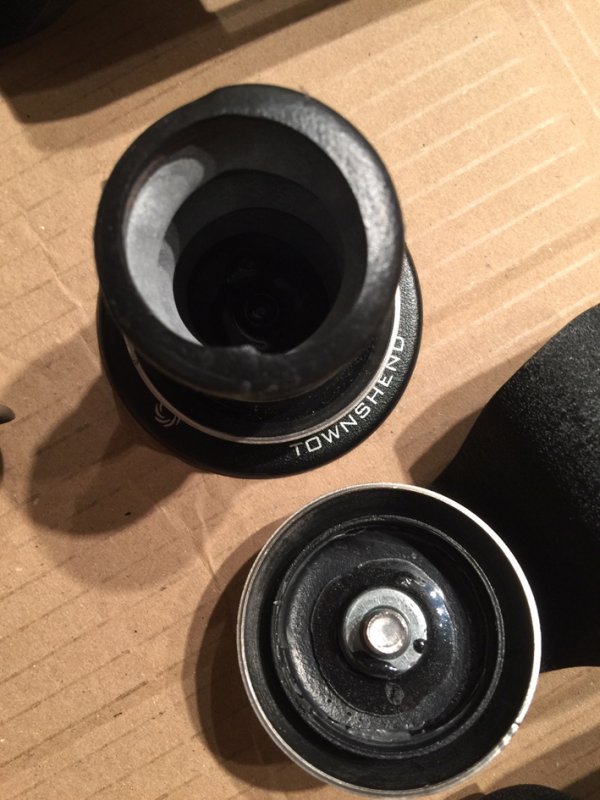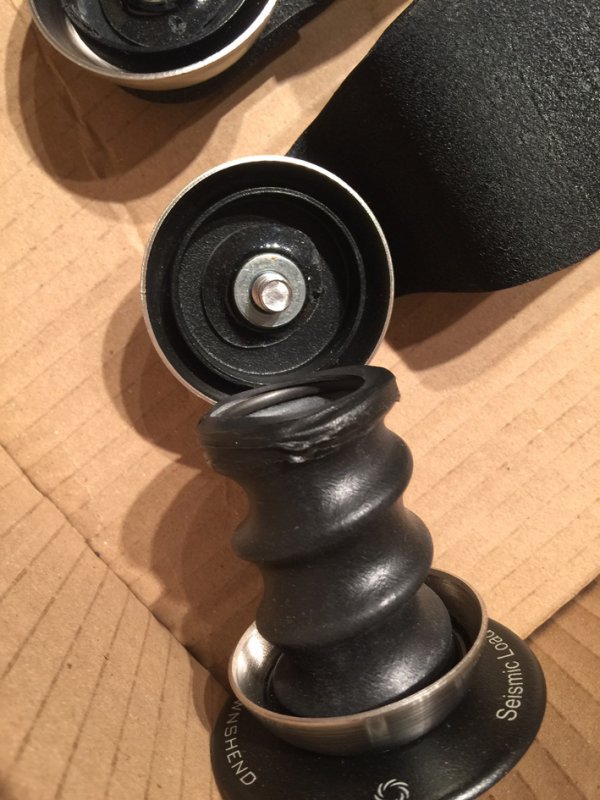Page 1 of 10
Townshend seismic isolation products
Posted: Sun Jan 30, 2022 5:30 pm
by karatestu
I have known about these things for some time but never really looked into them in any great detail. Probably because they cost so much. Even if you just buy the individual pods then for a pair of speakers you will require eight of them at £90 each.
Cost aside, has anybody here heard the effect these things have on speakers ? I have read a couple of diy threads where the makers have said they improve the sound considerably. I am aware that diyers often overstate the level of improvement that one of their creations bring

but it is hard not to get sucked in by the hype.
What is the verdict ?
Re: Townshend seismic isolation products
Posted: Sun Jan 30, 2022 6:35 pm
by TheMadMick
I can tell you my experience with Pro Ac D28's and MA P200's.
I had the Pro Acs on Nordost pulsar points so they might not "store" energy. The sound was fat and flabby.
I has the P200's on their supplied rubber cone feet and they weren't much better. So I put them on spikes and you wouldn't believe the change. OK, the sound was "thinner" but the definition was great. They are still on spikes.
I'd suggest that the seismic sinks are rubbish if they let the speaker move as I believe they do. Get any speaker as stable as possible and let the information out.
Re: Townshend seismic isolation products
Posted: Sun Jan 30, 2022 7:42 pm
by Theo
You can suggest that the Townshend Sinks are 'rubbish', and you'd be entirely wrong

I've used their speaker isolation platforms on 3 different speakers - neat MFS stand mounted, neat MF7 floor standing, and Jamo R909 dipoles. Each one started life with a spiked arrangement onto a suspended solid timber floor (not laminate). In all three examples, the benefits of the Townshend platforms was fundamental and wholly positive. Yes, they 'wobble', but they are far more orderly and focussed by not 'reacting' along with the floor. Bass and soundstage are the most noticeable benefits.
I can't imaging any future speaker I own not using Townshend stands. I believe they're that good.
Re: Townshend seismic isolation products
Posted: Sun Jan 30, 2022 7:49 pm
by savvypaul
In my experience...
Solid floor - couple (preferably with light, rigid stands, spikes to floor, cones to speaker base)
Suspended floor - decouple.
The Townshends would appear to do a very good job of the latter. Some of the Isoacoustics feet might be worth trying (at a good bit less money).
Re: Townshend seismic isolation products
Posted: Sun Jan 30, 2022 8:44 pm
by Lindsayt
Looking here:
https://www.whatsbestforum.com/threads/ ... 035/page-2



the Townshend Seismic stuff appears to be a spring in a fairly thin rubber shroud in 2 metal cups.
With a bolt running through the middle, to keep the unit together when they are not compressed.
From a mechanical engineering point of view, there's not much damping. The springs would have a natural resonant frequencies in the vertical and horizontal planes. With those frequencies depending on the weight rating of the spring...
Re: Townshend seismic isolation products
Posted: Sun Jan 30, 2022 9:01 pm
by karatestu
It's a low pass filter. The spring only passes energy below it's resonant frequency. The aim is to get the resonant frequency down to 5 Hz or less so everything above that is attenuated.
The idea of a speaker being able to wobble about goes against previous understanding but many people claim they are very effective at what they do. Increased clarity in the bass and better imagjng / soundstagjng. I have also read that they improve matters even on solid concrete floors.
I am willing to believe that the concept works (although not for Madmick). The Townshend products started out using air bladders or inner tubes I believe. That sort of spending is more within my limits

Re: Townshend seismic isolation products
Posted: Sun Jan 30, 2022 9:22 pm
by Lindsayt
If anyone could find a source for suitably sized and shaped metallic cups; the springs, rubber shroud, nut, bolt and washers would be cheap as chips...
Or maybe get some much larger diameter springs - of the right spec for the weight they are supporting - and put them under your speakers? And don't bother with the cups and shroud.
Re: Townshend seismic isolation products
Posted: Sun Jan 30, 2022 10:07 pm
by r3xj0hn570n

- IMG_20220131_090311.jpg (392.38 KiB) Viewed 2850 times
this is an industrial rubber foot. They aren't cheap, but they aren't boutique either.
I'd echo Paul's advice that spikes work on a solid concrete floor, otherwise you'll have to experiment to find out what works.
Re: Townshend seismic isolation products
Posted: Sun Jan 30, 2022 11:23 pm
by antonio66
TheMadMick wrote: ↑Sun Jan 30, 2022 6:35 pm
I can tell you my experience with Pro Ac D28's and MA P200's.
I had the Pro Acs on Nordost pulsar points so they might not "store" energy. The sound was fat and flabby.
I has the P200's on their supplied rubber cone feet and they weren't much better. So I put them on spikes and you wouldn't believe the change. OK, the sound was "thinner" but the definition was great. They are still on spikes.
I'd suggest that the seismic sinks are rubbish if they let the speaker move as I believe they do. Get any speaker as stable as possible and let the information out.
So Mad Mick, your experience with Townshend Seismic products is 'ZILCH'
I can tell you Townshend seismic bars (before the platforms) have been under my brother's speakers (JM Labs Mezzo Utopia and Estelon XB's) for a number of years and they work, whether on a solid or suspended floor. They are expensive, but the improvements are worthwhile, so all the logic of keeping the speaker stable, which was impressed on everyone back in the day, goes out the window.
Re: Townshend seismic isolation products
Posted: Sun Jan 30, 2022 11:44 pm
by Geoff.R.G
antonio66 wrote: ↑Sun Jan 30, 2022 11:23 pm
TheMadMick wrote: ↑Sun Jan 30, 2022 6:35 pm
I can tell you my experience with Pro Ac D28's and MA P200's.
I had the Pro Acs on Nordost pulsar points so they might not "store" energy. The sound was fat and flabby.
I has the P200's on their supplied rubber cone feet and they weren't much better. So I put them on spikes and you wouldn't believe the change. OK, the sound was "thinner" but the definition was great. They are still on spikes.
I'd suggest that the seismic sinks are rubbish if they let the speaker move as I believe they do. Get any speaker as stable as possible and let the information out.
So Mad Mick, your experience with Townshend Seismic products is 'ZILCH'
I can tell you Townshend seismic bars (before the platforms) have been under my brother's speakers (JM Labs Mezzo Utopia and Estelon XB's) for a number of years and they work, whether on a solid or suspended floor. They are expensive, but the improvements are worthwhile, so all the logic of keeping the speaker stable, which was impressed on everyone back in the day, goes out the window.
Your experience is obviously your experience but I have questions.
Newton’s third law of motion says that for every action there is an equal and opposite reaction, if the amplifier is driving the speaker cone in one direction the reaction will be for the speaker chassis to move in the opposite direction. The more rigid the mounting the more of the energy will go into moving the cone. With a flexible mounting some energy must go into heating up the suspension. How does having the speaker enclosure moving about affect the sound? Is the effect always positive?
My speakers were on carpet but putting them on spikes to the concrete floor made a positive difference. Of course it may be that with very heavy, inert, enclosures the mounting, whether spikes or springs, has less effect than might be the case with lighter, less inert, enclosures. I don’t dispute that these isolators work for you but I don’t understand why. As an engineer, understanding why is important.
 but it is hard not to get sucked in by the hype.
but it is hard not to get sucked in by the hype.

